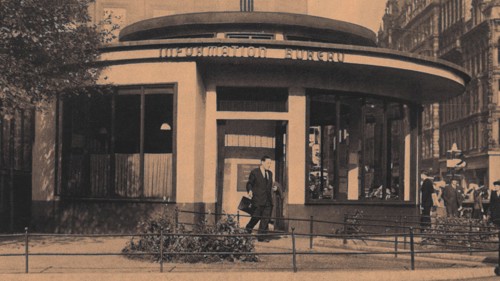Information Bureau - Times Past

In partnership with the Glasgow Times, our archivists are exploring Glasgow's fascinating history. This week, Michael Gallagher writes about the city's Information Bureau.
What is the minimum height to become a ballet dancer? Where is the most expensive place to eat a meal in Scotland? Who prints the jokes inside Christmas crackers?
Before Google, Glasgow turned to its Information Bureau for answers - these are just some of the questions posed by the Glaswegians of yesteryear.
The Glasgow Corporation Information Bureau opened in April 1938 in St Enoch Square. Its purpose was to gather, organise and make accessible information about the city and, although its work was never defined precisely, was a curious combination of reference library, publisher, tourist information office and search engine.
One member of staff described the Bureau as “a central point to which local people can go for guidance, a focal point for strangers and an essential part of the lucrative tourist industry.”
Staff endeavoured to answer enquirers’ questions or point them to an authority from which they could get a solution and the Information Bureau was used by citizens and visitors alike. Its Information Officers answered questions on every topic imaginable by referring to a complex card system that contained more than 100,000 entries by 1950.
Common enquiries concerned transport and travel, events in the city and accommodation, but enquirers often asked where they could buy particular items. Such requests included an elephant, a bust of Beethoven, a fortune teller’s crystal ball and, rather ominously, a bullet-proof vest. We know this because staff kept meticulous records of “unusual questions asked”, which are now held in our collections.
As well as answering enquiries, the Information Bureau helped prepare and print various guides to Glasgow. Many were aimed at the tourist market but others contained useful information for Glaswegians too, such as tram routes and entertainment listings. A personal favourite is ‘Glasgow through a Drinking Glass: a Guide to Glasgow's Better Pubs’, from 1973. That same year, a trade mission travelled to Japan with 5000 leaflets (“Glasgow: Your Holiday Centre”) printed in Japanese.
The Bureau moved from St Enoch Square to George Square in 1960, an address that confused one American correspondent whose enquiry was directed to the purported head of the service, a Mr George Square.
In the aftermath of the Great Storm of 1968, the Bureau played an essential role in Glasgow’s recovery effort, providing vital assistance when the city was reduced to a disaster area. And when Glasgow celebrated its 800th anniversary in 1975 it helped organise a special programme of events (including the roasting of an ox in Glasgow Green) and dealt with almost 250,000 enquiries.
After the creation of Strathclyde Regional Council in 1975, the Bureau’s work fell under the remit of the Public Relations Department and it took on a more conventional role, dealing less with ad hoc enquiries but still producing promotional materials, organising events, undertaking information campaigns for residents and even expanding into video production.
Although the Information Bureau no longer exists, its records give a fascinating insight into both the history of our city and the minds of its citizens.
